This article needs additional citations for verification .(February 2020) |

The Kikeriki (Cock-a-doodle-do) was a satirical magazine published in Vienna, Austria, between 1861 and 1933.
This article needs additional citations for verification .(February 2020) |

The Kikeriki (Cock-a-doodle-do) was a satirical magazine published in Vienna, Austria, between 1861 and 1933.
It was founded in 1861 by Ottokar Franz Ebersberg , a journalist and playwright who wrote under the pseudonym O. F. Berg. The paper was successful and popular until the time of the First Republic. In the best times the circulation was 25,000 copies.
Until the 1880s the paper had a liberal orientation. Under the increasing influence of the right-wing's Christians around Karl Lueger, Kikeriki became sharply anti-Semitic. After the First World War the paper politically approached the Deutschnationalen and since the mid 1920s also the Nationalsozialistische Deutsche Arbeiterpartei Österreichs – Hitlerbewegung (Austrian NSDAP). In 1933, because of his partisanship of the Reich German National Socialists who came to power on January 30, the Kikeriki was prohibited by the Austrofascist Party Government of Engelbert Dollfuß.
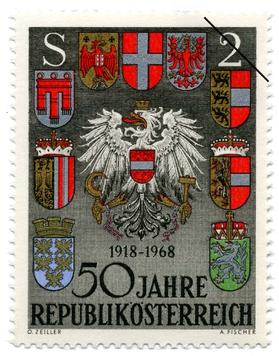
This article deals with the stamps and postal history of the Austrian Empire, Cisleithania within Austria-Hungary, and the Republic of Austria.
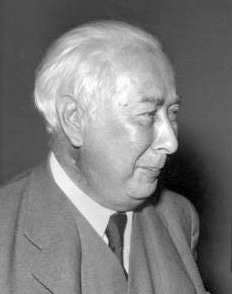
Theodor Heuss was a German liberal politician who served as the first president of West Germany from 1949 to 1959. His cordial nature – something of a contrast to the stern character of chancellor Konrad Adenauer – largely contributed to the stabilization of democracy in West Germany during the Wirtschaftswunder years. Before beginning his career as a politician, Heuss had been a political journalist.

Austrian Nazism or Austrian National Socialism was a pan-German movement that was formed at the beginning of the 20th century. The movement took a concrete form on 15 November 1903 when the German Worker's Party (DAP) was established in Austria with its secretariat stationed in the town of Aussig. It was suppressed under the rule of Engelbert Dollfuss (1932–34), with its political organization, the DNSAP banned in early 1933, but was revived and made part of the German Nazi Party after the German annexation of Austria in 1938.
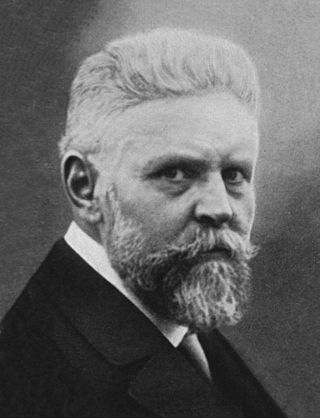
Alfred Ploetz was a German physician, biologist, Social Darwinist, and eugenicist known for coining the term racial hygiene (Rassenhygiene), a form of eugenics, and for promoting the concept in Germany.
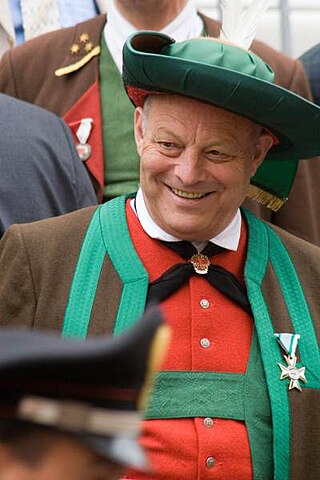
Landeshauptmann or Landeshauptfrau is the chairman of a state government and the supreme official of an Austrian state and the Italian autonomous provinces of South Tyrol and Trentino. His or her function is equivalent to that of a minister-president or premier. Until 1933 the term was also used in Prussia for the head of government of a province, in the modern-day states of Germany the counterpart to Landeshauptmann is the Ministerpräsident (minister-president).

The First Austrian Republic, officially the Republic of Austria, was created after the signing of the Treaty of Saint-Germain-en-Laye on 10 September 1919—the settlement after the end of World War I which ended the Habsburg rump state of Republic of German-Austria—and ended with the establishment of the Austrofascist Federal State of Austria based upon a dictatorship of Engelbert Dollfuss and the Fatherland's Front in 1934. The Republic's constitution was enacted on 1 October 1920 and amended on 7 December 1929. The republican period was increasingly marked by violent strife between those with left-wing and right-wing views, leading to the July Revolt of 1927 and the Austrian Civil War of 1934.

Matthias Sindelar was an Austrian professional footballer. Regarded as one of the greatest Austrian players of all time, Sindelar notably played for Austria Vienna and the national side.
Franz "Bimbo" Binder was an Austrian football player and coach who played as a forward. Internationally he represented the Austria national football team and the Germany national football team during the Anschluss.

The Fatherland Front was the right-wing conservative, nationalist and corporatist ruling political organisation of the Federal State of Austria. It claimed to be a nonpartisan movement, and aimed to unite all the people of Austria, overcoming political and social divisions. Established on 20 May 1933 by Christian Social Chancellor Engelbert Dollfuss as the only legally permitted party in the country, it was organised along the lines of Italian Fascism, was fully aligned with the Catholic Church, and did not advocate any racial ideology, as Italian Fascism later did. It advocated Austrian nationalism and independence from Germany on the basis of protecting Austria's Catholic religious identity from what they considered a Protestant-dominated German state.

Both the civil and state flag of the German state of Saxony feature a bicolour of white over green, similar to the Austrian province of Styria although they are historically not related to each other. The state flag is similar to the civil flag, except it is defaced in the centre with the coat of arms of Saxony. The colours of both flags were officially decided as state colours in 1815. The aristocracy used mostly and in first time the quadrangular version and later the rectangular.
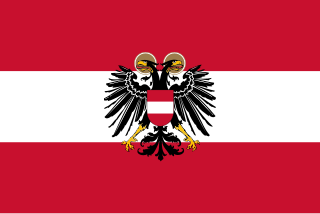
The Federal State of Austria was a continuation of the First Austrian Republic between 1934 and 1938 when it was a one-party state led by the conservative, nationalist, and corporatist Fatherland Front. The Ständestaat concept, derived from the notion of Stände, was advocated by leading regime politicians such as Engelbert Dollfuss and Kurt Schuschnigg. The result was an authoritarian government based on a mix of Italian Fascist and conservative Catholic influences.

Franz Schuselka was an Austrian politician and writer.

The House of Lords was the upper house of the Imperial Council, the bicameral legislature of the Austrian Empire from 1861 and of the Cisleithanian (Austrian) half of Austria-Hungary upon the Compromise of 1867. Created by the February Patent issued by Emperor Franz Joseph I on 26 February 1861, it existed until the end of World War I and the dissolution of the Dual Monarchy, when on 12 November 1918 the transitional National Assembly of German-Austria declared it abolished. It was superseded by the Federal Council of the Austrian Parliament implemented by the 1920 Federal Constitutional Law.

The House of Deputies was, from 1861, the lower house of the bicameral Imperial Council parliament of the Austrian Empire and, from 1867 to 1918, of the Cisleithanian lands within Austria-Hungary. The upper chamber was the House of Lords.
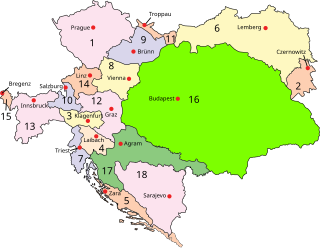
The dissolution of Austria-Hungary was a major geopolitical event that occurred as a result of the growth of internal social contradictions and the separation of different parts of Austria-Hungary. The more immediate reasons for the collapse of the state were World War I, the 1918 crop failure, general starvation and the economic crisis. The Austro-Hungarian Empire had additionally been weakened over time by a widening gap between Hungarian and Austrian interests. Furthermore, a history of chronic overcommitment rooted in the 1815 Congress of Vienna in which Metternich pledged Austria to fulfill a role that necessitated unwavering Austrian strength and resulted in overextension. Upon this weakened foundation, additional stressors during World War I catalyzed the collapse of the empire. The 1917 October Revolution and the Wilsonian peace pronouncements from January 1918 onward encouraged socialism on the one hand, and nationalism on the other, or alternatively a combination of both tendencies, among all peoples of the Habsburg monarchy.
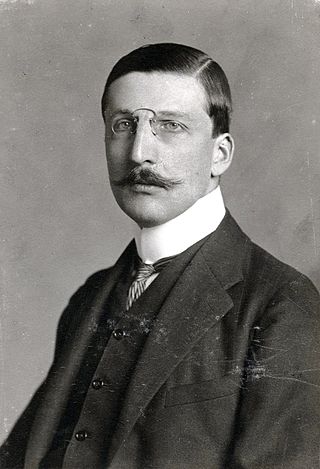
Heinrich Mataja was an Austrian lawyer and politician of the Christian Social Party.
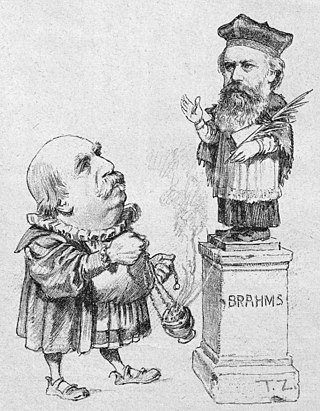
The Figaro was an Austrian German-language satirical magazine, published weekly in Vienna between 1857 and 1919. Its orientation was liberal-humorous.
Frederick Wendel was a German political activist, journalist, author and co ran the Book Circle book club with Karl Schröder.
The Neues Wiener Tagblatt was a daily newspaper published in Vienna from 1867 to 1945. It was one of the highest-circulation newspapers in Austria before 1938.
Die Grenzboten was a German language, national liberal magazine published from 1841 to 1922, sometimes weekly and sometimes fortnightly.